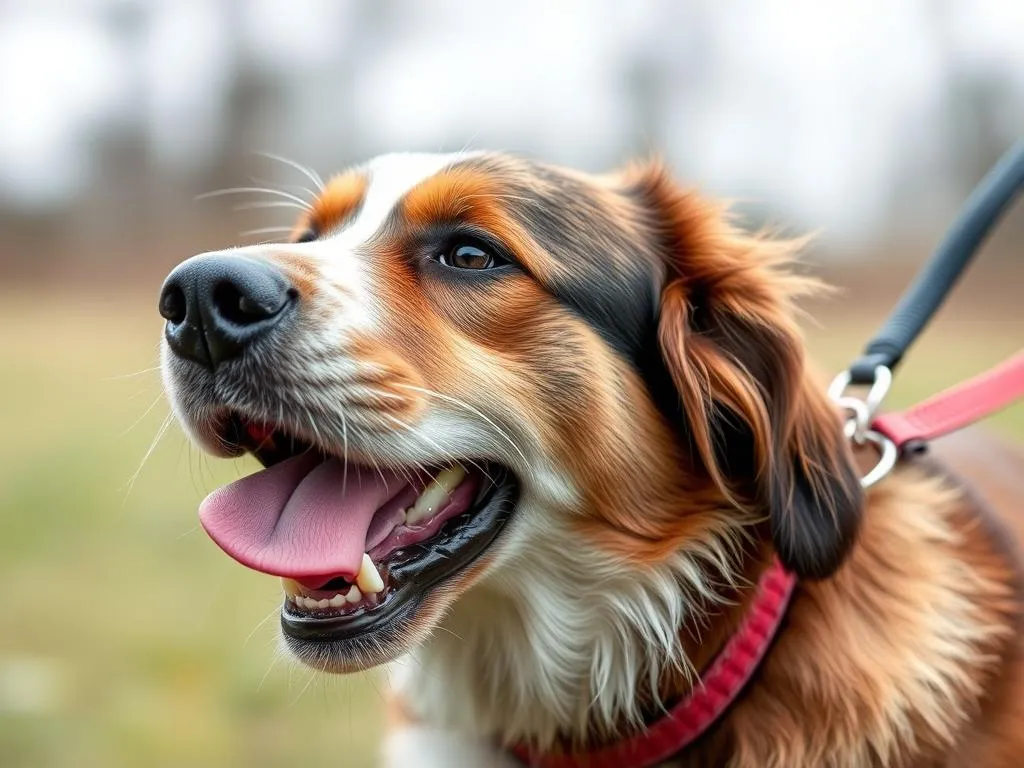
Dogs and their behaviors can sometimes be puzzling. One common issue that many dog owners face is how to stop your dog from biting the leash. This behavior can turn a simple walk into a frustrating ordeal, making training more challenging. Addressing leash biting is crucial not only for a peaceful walk but also for the overall training process. A well-trained dog is not only a joy to walk but also a happier, more balanced companion.
In this article, we will explore the reasons behind leash biting, practical training techniques, common mistakes to avoid, and when to seek professional help.
Understanding the Behavior
Why Do Dogs Bite the Leash?
Leash biting often stems from various natural instincts or behavioral issues. Recognizing the root causes can significantly help in addressing the problem:
-
Natural Instincts: Dogs have a strong prey drive, which can manifest as biting and tugging on leashes. This instinct is especially prevalent in breeds that were originally bred for hunting or herding.
-
Boredom or Excess Energy: If your dog isn’t getting enough physical or mental stimulation, they may resort to biting the leash as an outlet for their pent-up energy.
-
Anxiety or Stress-Related Behaviors: Some dogs may bite the leash when they feel anxious or stressed, particularly in unfamiliar environments or situations.
-
Seeking Attention or Reaction: Dogs are social creatures and may bite the leash to get their owner’s attention, whether it’s positive or negative.
Common Scenarios for Leash Biting
Understanding when leash biting occurs can help in developing effective strategies:
-
During Walks: Many dogs bite the leash while on walks, especially if they are overly excited or distracted by their surroundings.
-
At the Dog Park: The excitement of being around other dogs can lead to leash biting as a form of play or overstimulation.
-
When Excited or Anxious: Dogs may bite the leash when they are excited about going outside, or conversely, when they are anxious about an upcoming event.
-
While Waiting to Go Outside: Anticipation can lead to leash biting as dogs express their eagerness to explore the outdoors.
Preparing for Training
Assess Your Dog’s Behavior
Before diving into training techniques, it’s essential to assess your dog’s specific behavior.
-
Identify Triggers: Observe when and where your dog bites the leash. Is it during walks, at home, or in busy areas?
-
Keep a Training Journal: Documenting your dog’s leash biting patterns can help identify trends and triggers, making it easier to customize your training approach.
Choosing the Right Gear
The gear you use can also impact leash biting behavior:
-
Types of Leashes: Consider standard leashes for better control. Retractable leashes can encourage pulling, while no-pull leashes can help manage strong pullers.
-
Harness vs. Collar: A well-fitted harness can be more comfortable and may help reduce pulling without causing strain on the dog’s neck.
-
Recommendations for Chew-Resistant Leashes: If your dog is a persistent leash biter, consider investing in a chew-resistant leash to withstand their enthusiasm.
Setting Up a Positive Training Environment
Creating a conducive training environment is key to success:
-
Minimize Distractions: Choose a quiet area with minimal distractions for training sessions, particularly when starting out.
-
Use a Familiar Area: Training in a familiar environment can reduce anxiety and help your dog focus better.
-
Ensure Comfort and Safety: Make sure your dog feels safe and comfortable, as this will encourage them to participate in the training willingly.
Training Techniques to Stop Leash Biting
Redirecting Attention
One effective way to manage leash biting is to redirect your dog’s attention:
-
Use of Toys or Treats: Keep toys or high-value treats handy during walks; if your dog starts to bite the leash, redirect their focus to the toy or treat.
-
Teaching the “Leave It” Command: This command can be invaluable. By teaching your dog to leave the leash alone, you provide them with a clear alternative behavior.
Positive Reinforcement Strategies
Positive reinforcement can yield impressive results:
-
Reward Calm Behavior: When your dog walks calmly without biting the leash, offer treats and praise. This reinforces the desired behavior.
-
Gradual Exposure to Leashes: Begin by letting your dog interact with the leash in a controlled environment. Gradually increase exposure during walks, rewarding calm behavior.
Incorporating Obedience Commands
Basic commands can help manage leash biting:
-
Teaching Basic Commands: Commands like “sit,” “stay,” and “heel” can be effective in redirecting your dog’s focus and preventing leash biting.
-
How Commands Can Prevent Leash Biting: When your dog knows what is expected, they are less likely to engage in unwanted behaviors like biting the leash.
Managing Energy Levels
Managing your dog’s energy is vital in preventing leash biting:
-
Importance of Regular Exercise: Ensure your dog gets adequate exercise before walks. A well-exercised dog is less likely to exhibit leash biting behavior.
-
Interactive Games: Engage your dog in mentally stimulating games at home, such as puzzle toys or fetch, to keep their mind occupied.
Implementing Desensitization Techniques
Desensitization can help your dog become more comfortable with the leash:
-
Gradual Introduction of the Leash: Begin by allowing your dog to sniff and explore the leash in a calm setting before attaching it for walks.
-
Associating the Leash with Positive Experiences: Create positive associations by using the leash during playtime or rewarding your dog with treats when they are calm around it.
Common Mistakes to Avoid
Using Punishment or Negative Reinforcement
Using punishment can backfire:
-
Explanation of Why This is Counterproductive: Punishing your dog for biting the leash can increase anxiety and exacerbate the behavior. Instead, focus on positive reinforcement.
-
Alternative Approaches to Discipline: Redirecting behavior and reinforcing positive actions are far more effective than punishment.
Inconsistency in Training
Consistency is key in dog training:
-
Importance of a Consistent Training Routine: Establish a routine and stick to it. Regular training sessions help reinforce desired behaviors.
-
Involving All Family Members: Ensure everyone in the household is on the same page regarding training and commands to avoid mixed signals.
Ignoring Behavioral Signs
Being attentive to your dog’s behavior is crucial:
-
Recognizing Signs of Anxiety or Stress: Learn to interpret your dog’s body language. Signs of anxiety, such as panting or tail tucking, indicate they may need a break.
-
Addressing Underlying Issues: Instead of solely focusing on leash biting, address the underlying causes of anxiety or boredom.
When to Seek Professional Help
Identifying Severe Cases
Sometimes, leash biting may signal deeper behavioral issues:
-
Signs That Indicate a More Serious Behavioral Issue: If leash biting becomes severe, leading to aggressive behavior or fearfulness, it may be time to consult a professional.
-
Importance of Consulting a Professional Trainer or Behaviorist: Professional guidance can provide tailored strategies and insight into your dog’s specific needs.
Choosing the Right Professional
Finding the right trainer is crucial:
-
What to Look for in a Dog Trainer: Look for trainers with positive reinforcement methods, credentials, and experience in behavioral issues.
-
Questions to Ask Before Hiring a Trainer: Inquire about their approach to leash biting and whether they have experience handling similar cases.
Conclusion
Addressing how to stop your dog from biting the leash is an essential part of effective dog training. By understanding the behavior, preparing adequately, and employing appropriate training techniques, you can foster a calm and enjoyable walking experience for both you and your dog. Remember to remain patient and consistent throughout the training process. With time and dedication, you can achieve long-term success in leash training, leading to a happier, healthier relationship with your furry friend.









